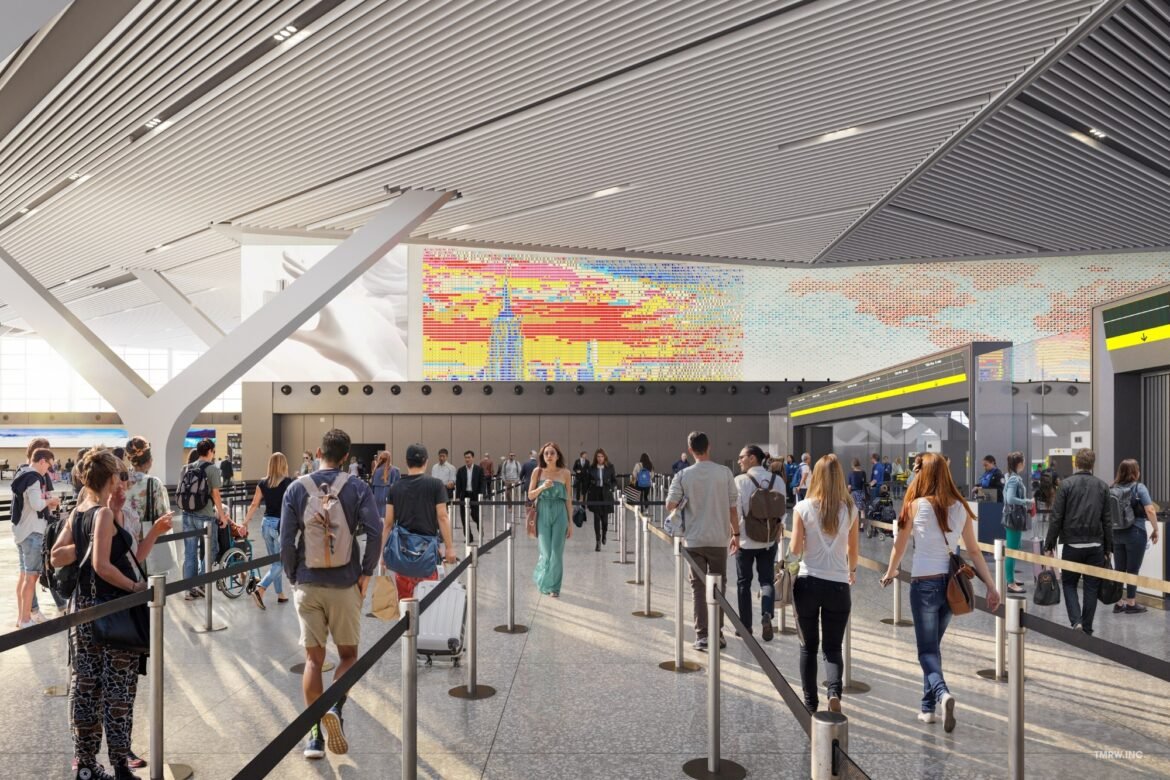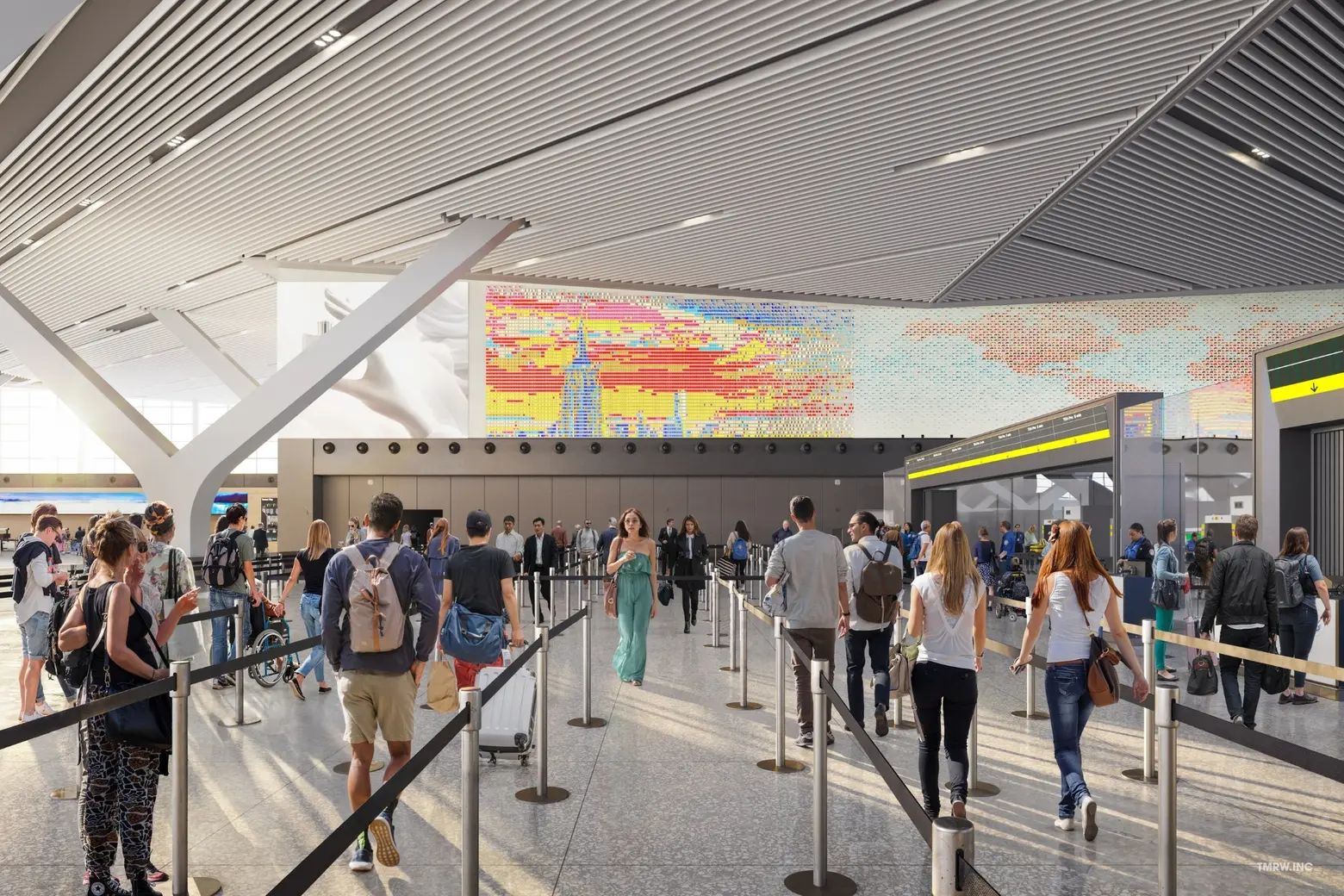
The world’s largest split-flap display in Terminal 1 will flicker through scenes of New York as passengers move through security. Credit: The New Terminal One at JFK/Arup
JFK Airport’s new $9.5 billion terminal wants to reflect New York’s identity as a capital of creativity and culture. The Port Authority of New York and New Jersey and New Terminal One announced on Monday the seven artists who will create large-scale, site-specific works anchoring the terminal’s cultural program, which celebrates the history, culture, and diversity of New York City and Queens. The installations, ranging from sculptures and mosaics to murals, will complement the broader arts initiative that also features filmmaking and immersive digital experiences.
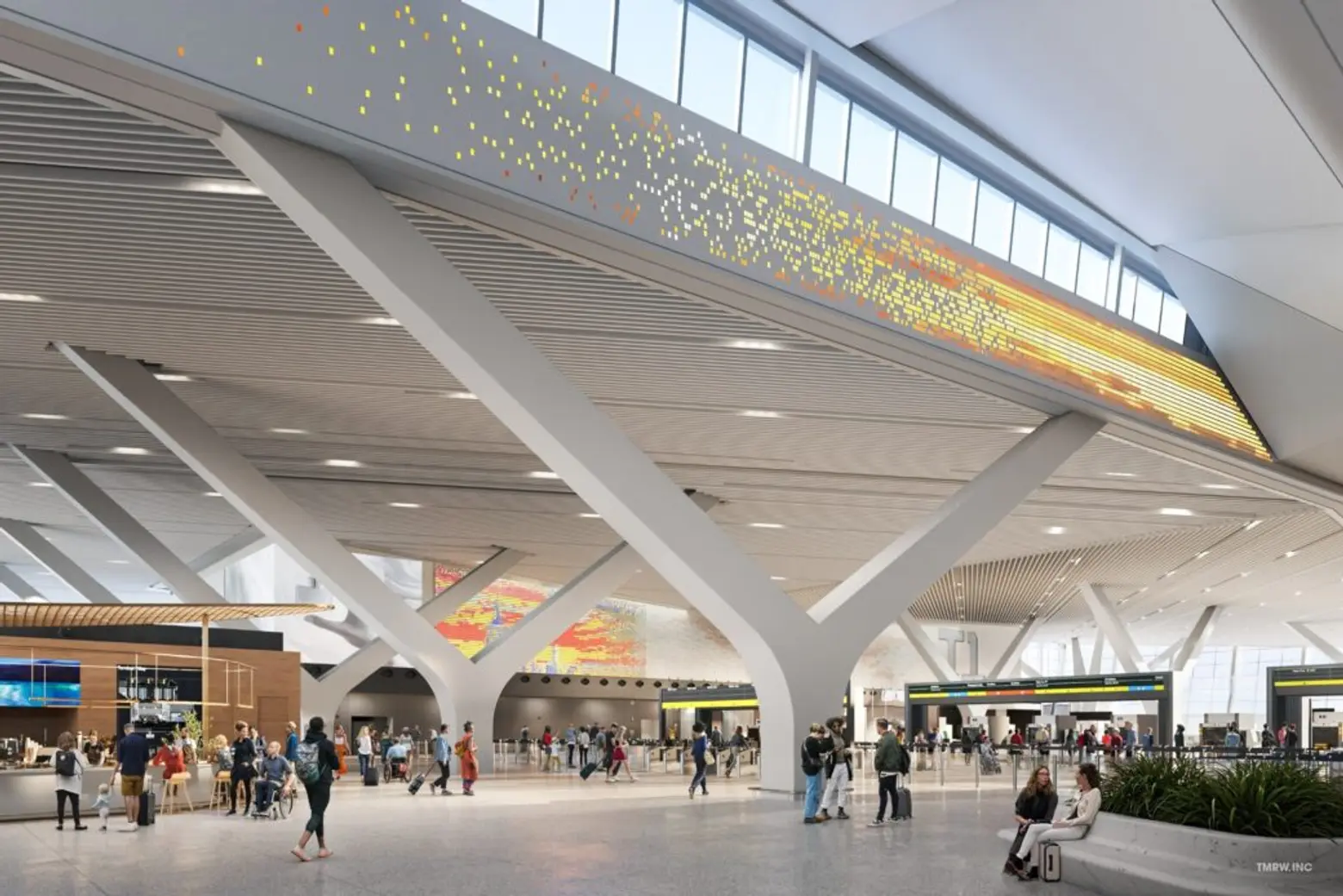
Developed by lead curator Culture Corps, the public art program will showcase works that reflect the city’s iconic identity while positioning the new terminal as both a transportation hub and a cultural landmark.
New Terminal One aims to transcend the typical approach to airport public art and digital installations—traditionally treated as separate programs—by merging them into a single, comprehensive initiative that delivers an unparalleled cultural experience.
Led by Arup, the broader cultural program brings together a multidisciplinary team of creative professionals working to deliver an experience that could only happen in NY and captures the city’s unmistakable energy and spirit.
“Too often airport experiences feel like they could be anywhere,” Gideon D’Arcangelo, experience design lead at Arup, said. “Building on the Port Authority’s philosophy of creating airports with a true sense of place, we set out to create an experience that could not happen anywhere else, that could only happen in New York.”
Yinka Shonibare’s “Kites for Queens” features nine hand-painted Dutch wax batik kites that celebrate the borough’s multicultural identity and allude to broader themes of movement, migration, and connection.
Kelly Akashi’s “Migrations of Flora” stands 18 feet tall and depicts native flowers emerging from a bronze hand, symbolizing New York’s global significance and the strength and unity it represents.
Tomás Saraceno’s “Cloud Cities New York” envisions connection across “human-drawn divisions,” symbolized through suspended, iridescent forms that shift with the changing daylight to create a cloudscape that “unites us all.”
Ilana Savdie’s “Egregoros,” a large-scale mural, evokes the past, present, and future of New Yorkers while highlighting migration’s essential role in the city’s history. Inspired by classic paintings of voyages, the work captures New York’s perpetual forward motion through sweeping waves of bold color.
Julie Curtiss’s “New York Hands” presents a playful mosaic of oversized hands holding iconic foods and cultural symbols, capturing the theatricality and multicultural spirit of New York City.
Firelei Báez’s “Blue Calaibi–Yao Muzidi (or on alternate means of navigation)” layers sea flora and swimming figures over historic maps of New York City at pivotal moments in American history, forming a towering mural that merges past and present.
Woody De Othello’s sculpture series “The City That Never Sleeps” features watches, payphones, and streetlamps sitting atop baggage carousels, welcoming passengers to New York City’s five boroughs.
All of the selected artists have earned acclaim in their fields. According to Curbed, Yinka Shonibare exhibited work at last year’s Venice Biennale, Tomás Saraceno displayed his installations on the roof of the Metropolitan Museum of Art, and Woody De Othello presented his sculptures at the Whitney Biennial.
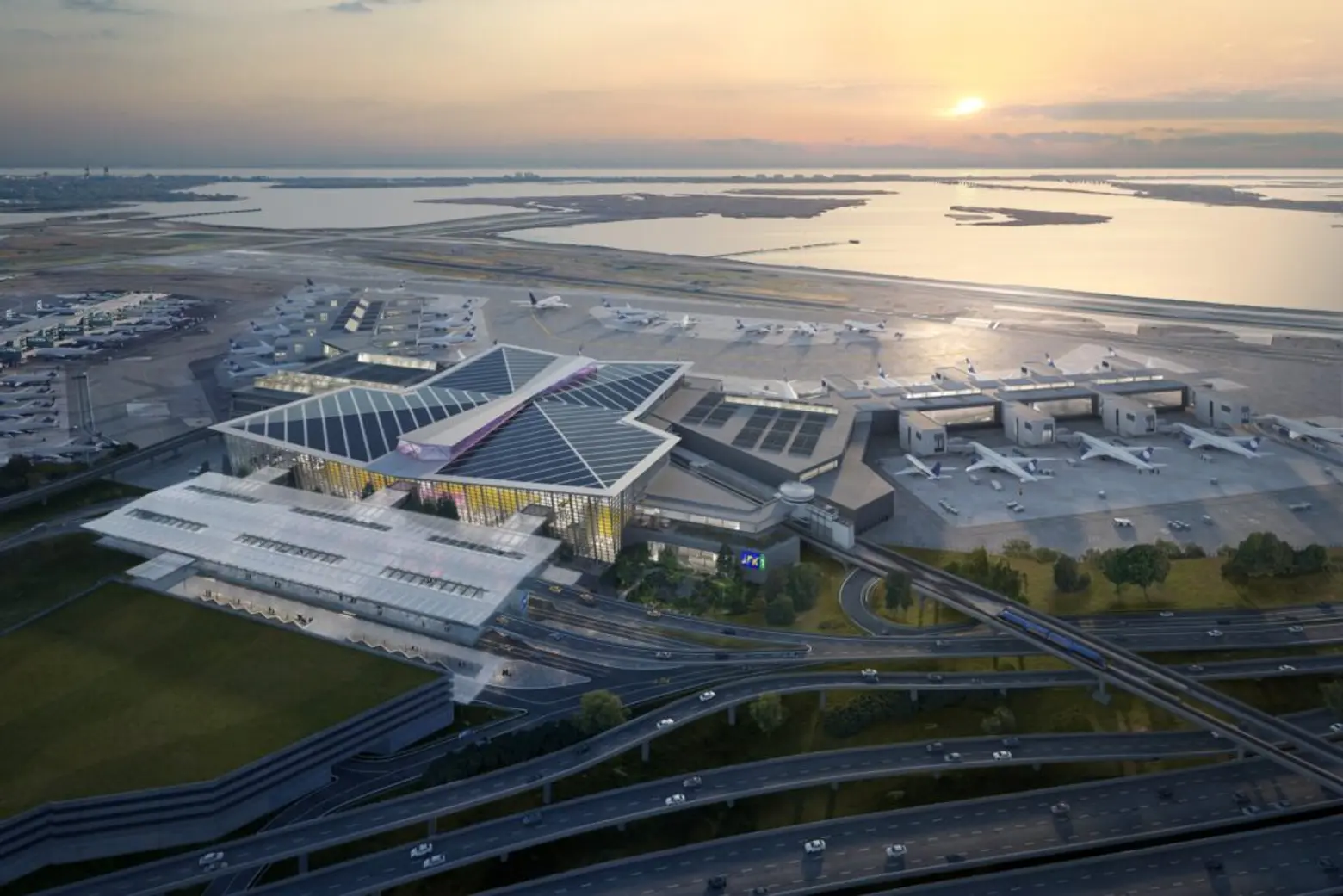
The terminal’s bold brand development, led by Pentagram, includes everything from monumental welcome signage to striking floor inlays in the baggage claim area. Key elements of Pentagram’s design feature the world’s largest split-flap display in the departures hall and “The City In Bloom,” one of the largest lenticular graphic installations ever mounted.
A series of short films, titled “Love Letters to New York,” will play in each hold room, offering visitors a final farewell to the city. Designed by Arup in partnership with Gentilhomme, these immersive digital experiences were developed in collaboration with local minority- and women-owned business enterprises and service-disabled veteran-owned businesses to bring authentic, place-based stories to life.
The defining feature of the new terminal’s departure hall is “Leaving New York,” an immersive media experience designed by Arup and Pentagram. Striking wall and ceiling displays above the security area tell a dynamic visual story of how people have departed New York over the centuries—by land, air, and sea.
Additionally, a soundscape of NYC sounds will greet travelers returning from international flights along the corridor leading to the Customs and Border Protection hall. Flowing visuals of the city’s natural landscapes, from upstate to Jamaica Bay, accompany the calming soundtrack.
As visitors exit the terminal, they’ll encounter another large-scale digital display offering a final visual tribute to the city’s iconic atmosphere. The display will feature a 90-degree wrap, creating an “anamorphic” optical illusion that gives subjects a 3D appearance.
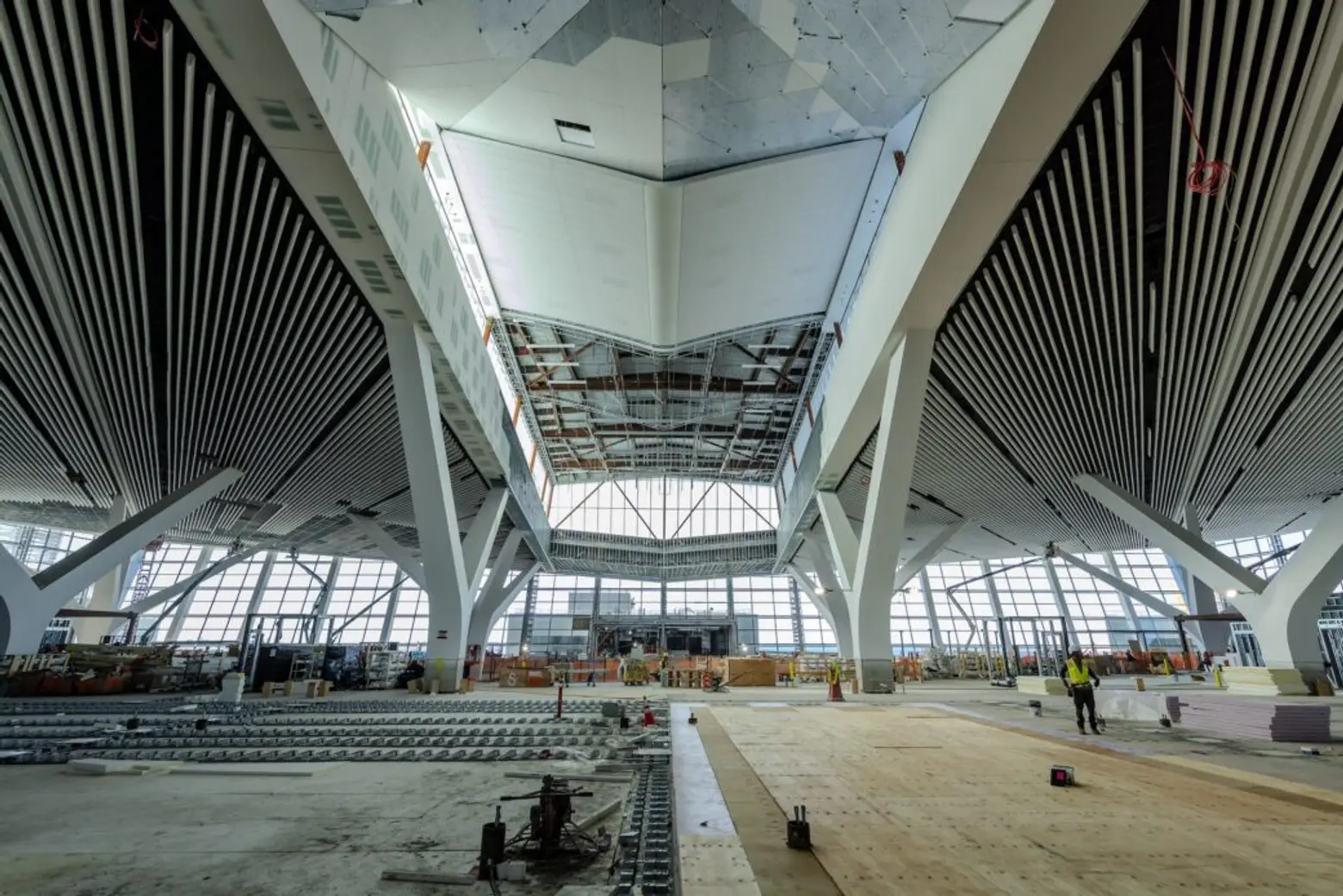
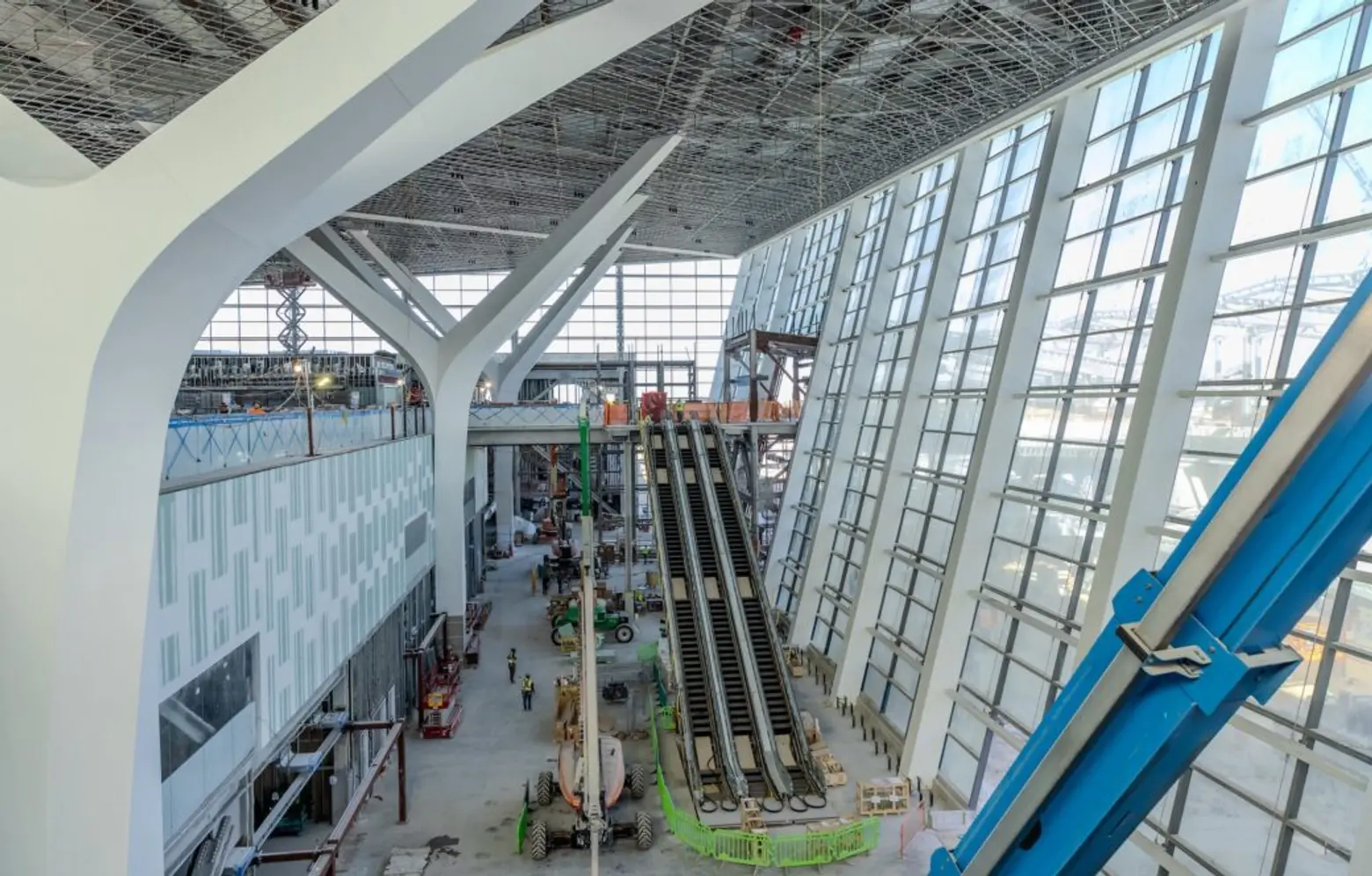
New Terminal One is at the core of the broader $19 billion JFK Vision Plan, unveiled in January 2017 to transform JFK Airport into a world-class global transit hub. Designed by AECOM Tishman and Gensler, the terminal broke ground in September 2022 and is expected to open in phases beginning in 2026 with the terminal headhouse and its first 14 gates.
When it is complete in 2030, New Terminal One will be the airport’s largest terminal, spanning 2.6 million square feet with 23 gates and capacity to serve up to 23 million passengers per year.
Other components include the new Terminal 6, which broke ground in February 2023, the $1.5 billion expansion of Terminal 4, led by Delta and JFK, and the $425 million expansion of Terminal 8, led by American Airlines, as 6sqft previously reported.
The Port Authority’s commitment to public art extends beyond New Terminal One. In August, the agency announced a partnership with the American Museum of Natural History, Lincoln Center for the Performing Arts, the Metropolitan Museum of Art, and the Museum of Modern Art to permanently display installations from each institution in the new Terminal 6.
RELATED:

